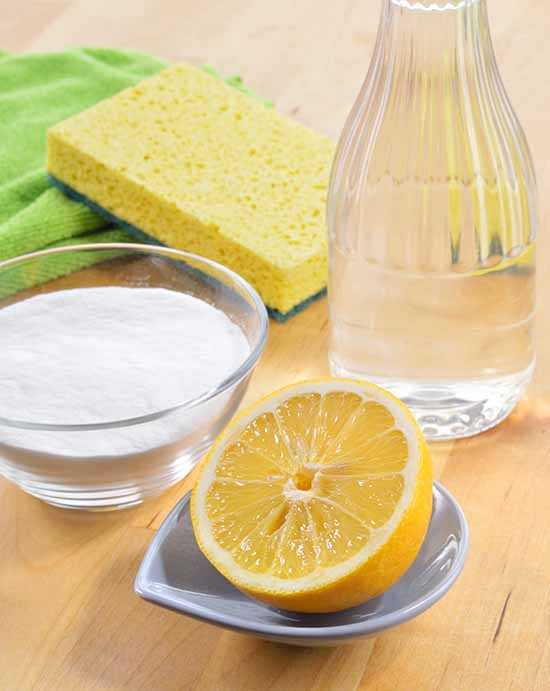Shine Up Your Sink
The sink is one of the hardest working areas of your kitchen, which means it could probably use a little TLC occasionally. If your once-shiny stainless-steel sink is suddenly looking a bit dingy from the combination of greasy dishes and soap scum, have no fear because a little elbow grease will work wonders to have it shining like new in no time.

Before You Get Started:
Make sure you have these items at the ready…
- Lemon (a lime will also do the trick)
- Baking soda
- White vinegar
- Olive oil
- Spoon
- Soft bristle scrub brush (a toothbrush or sponge make acceptable substitutes)
- Spray bottle
- Two dish towels (a microfiber cloth is a great alternative)
It’s Time to Shine
Follow these steps (plus one “bonus move”) that will have your sink glistening in no time:
1. Empty your sink of all dishes, rubber mats and/or metal sink grates, then rinse with hot water to remove any stuck-on food. Once all signs of food are gone, turn the water off.
2. While the sink is still wet, sprinkle baking soda evenly in a thin layer along the bottom of each sink reservoir and on all sides. Once fully covered, let it set for a minute or two. Tip: Baking soda is a terrific natural alternative to most chemical cleaners that removes odors, mild hard water deposits and grease.
3. Use a soft bristle scrub brush, toothbrush or sponge to gently scrub the baking soda all around the sink – including the nooks and crannies around the drain, faucet and knobs, as well as the lip of the sink where it meets the countertop. If you can discern the “grain” of the stainless steel, do your best to scrub in the direction of the grain. Avoid using a steel wool sponge for this step – it can scratch the surface.
4. Pour white vinegar into a spray bottle – do not dilute. Spray the vinegar evenly around the sink over the baking soda and let it set for a few minutes. You’ll note that the acidity of the vinegar will react with the baking soda – causing it to fizz. Once the fizzing has ended, rinse with warm water. You should start to notice a visible return of the shine to your stainless steel.
5. Cut a lemon in half. Use one half to scrub one side of the sink – squeezing as you press down and around, then repeat this step on the other side of the sink with the remaining half of the lemon. This step adds even more shine, plus the citric acid in the lemon acts as a natural antibacterial while giving your kitchen a nice, clean citrus scent. To disinfect your disposal and ramp up the benefits of that citrus scent, toss both halves of the lemon – one at a time – into the disposal. Rinse the sink again with warm water, then dry thoroughly with a dish towel.
6. Once the sink is completely dry, add a tablespoon of olive oil to both sides of your sink and use a clean dish towel or microfiber cloth to “buff” out your stainless steel – much like you would with wax on a car. This step will really enhance your sink’s shine.
BONUS MOVE: If the stains or discoloration in your sink are being particularly stubborn, you can add a step between steps 4 and 5 above. Mix a paste that combines four parts white vinegar with one-part cream of tartar. You can then apply a spoonful of the paste directly to those stubborn stains, scrub in gently with your scrub brush, sponge or toothbrush, and then let it sit for five minutes. Rinse to see if the stain is gone. If not, repeat this step. Rinse thoroughly and move on to step 5.
To enhance the enjoyment of your home and to keep it looking great, it’s important to take a few moments for these maintenance measures that can make a big impact on your “home sweet home.”
If you are looking for some additional reading about simple home maintenance tips, check out these articles:












